Let's talk Watercolor Paper!
Fine art watercolor paper prints represent a distinguished choice for fine artists seeking to elevate the presentation and perception of their artwork. Renowned for its textured surface and superior absorbency, watercolor paper enhances the visual depth and richness of prints, closely emulating the original art's aesthetic and tactile qualities.
This sophisticated paper offers artists the unique advantage of combining traditional artistic elements with modern printing technologies, allowing for the reproduction of artworks with remarkable color accuracy and detail. Furthermore, the durability and archival quality of high-grade watercolor paper ensures the longevity of prints, making them an ideal choice for both artists and buyers looking for investments in fine art.
The choice of watercolor paper as a substrate not only signifies an artist's commitment to quality but also appeals to collectors and connoisseurs who value the nuanced interplay of texture and color. Thus, watercolor paper prints stand out in the art market, offering tangible benefits that contribute significantly to the value and desirability of artists' work.
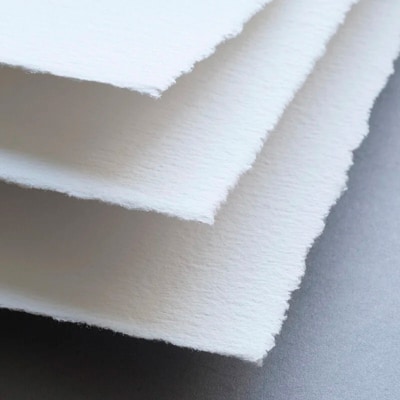
What is watercolor paper?
There is a long and illustrious history of watercolor paper being produced for famous artists over many centuries. Watercolor paper was first made by an Italian mill in 1264 (Fabriano, who still make papers for the Euro currency), Hahnemühle started their paper mill in 1584, and Arches also started making watercolor papers around 1620. The watercolor paper collection used at Chromaco for fine art reproduction is a variety of high quality, traditional media primarily manufactured by Hahnemühle.
Many of our papers are traditional mold-made watercolor papers with a coating that is ideal for high resolution Fine Art printing applications. The white cotton or cellulose papers do not contain optical brighteners, and are characterized by their unique tactile feel and surface texture. The fine yet highly pronounced felt structure of the genuine mold-made paper gives photographs and art reproductions a striking depth and three-dimensional effect.
Watercolor papers are coated to guarantee excellent print results with outstanding reproduction of color and detail, impressive contrasts and deep, rich blacks. All papers are also acid- and lignin-free and conform to ISO museum standards in order to meet the most exacting requirements in terms of age resistance.
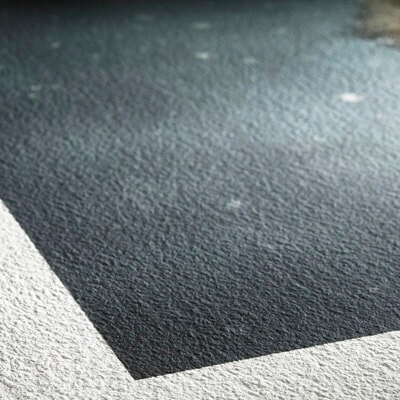
Why sell watercolor paper prints?
Selling fine art prints on watercolor paper offers artists a multitude of benefits, catering both to aesthetic preferences and market demands. Watercolor paper, known for its textured surface and absorbent qualities, enhances the visual depth and detail of prints, closely mimicking the original artwork. This medium allows for a high level of color accuracy and nuance, making it an ideal choice for reproductions of watercolor paintings, drawings, and other media that rely on subtle gradations and tones.
Furthermore, prints on watercolor paper appeal to a segment of collectors and enthusiasts who appreciate the traditional look and feel of fine art. Offering prints on this substrate can also provide artists with a more accessible price point for their work compared to original paintings, enabling a broader audience to purchase and enjoy their art, while maintaining the exclusivity and value of their original pieces.
Comparatively, watercolor paper prints offer a different aesthetic and tactile experience than those on canvas or metal. Canvas prints, while popular for their durability and textured surface reminiscent of original canvas paintings, may not capture the same level of detail as watercolor paper, particularly for works that contain intricate linework or delicate features.
Metal prints, on the other hand, are celebrated for their vibrant colors and modern, sleek appearance, but they might not suit artworks that are intended to convey a softer, more nuanced expression or that would benefit from the textured, matte finish of watercolor paper.
Thus, the choice of watercolor paper as a medium for fine art prints allows artists to leverage its unique properties to better match the intended aesthetic of their work, offering an alternative that complements, rather than competes with, other media available in the market.
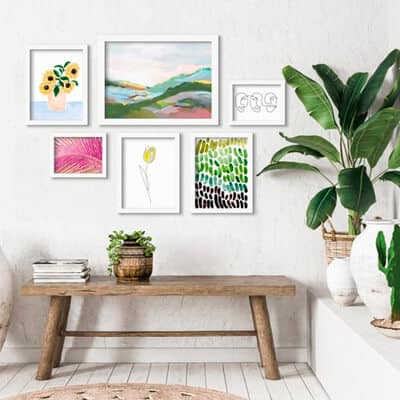
How are watercolor paper prints made?
The process of creating watercolor fine art prints using inkjet, or giclée technology, begins with the careful preparation of the original artwork. This involves having us capture high-resolution digital images of the artwork, ensuring every detail is accurately recorded with extremely accurate color. The digital files are then meticulously edited for color correction and to remove any imperfections, preparing them for the printing process.
Giclée printing technology uses archival-quality pigmented inks and watercolor papers, which are specifically chosen for their ability to reproduce the nuances of the original artwork. Inkjet printers employed in this process are capable of producing a wide range of colors and fine gradient details, making them ideal for reproducing the depth and subtlety of watercolor art.
Our color management skills play a pivotal role in ensuring the color accuracy of watercolor fine art prints. We achieve this by creating our own in-house ICC (International Color Consortium) color profiles, which standardize the color output across different devices – from the digital files to the final prints. The ICC profile for the specific type of watercolor paper being used is applied to the digital images before printing, ensuring that the colors produced by the printers match the original artworks as closely as possible. This step is crucial, as it compensates for the differences in how colors are rendered by various printers and papers.
By carefully managing colors throughout the printing process, we can produce prints that faithfully replicate the original artwork’s hues, tones, and gradations, ensuring that the final products meet the high standards expected of fine art reproductions. Its our observation after years of printmaking that watercolor reproductions are the highest quality match to original art compared to all other media we scan and print.
The finishing of watercolor fine art prints is the final step in the production process and we offer various options to enhance the presentation and appeal of prints. Trimming involves cutting the prints to specific dimensions, which can be tailored to the artists' preferences or to fit standard frame sizes, providing a clean and polished look (and helping you keep frame costs down).
Deckling is another finishing option, where we hand-tear the edges of the prints to create a textured, feathered edge, adding an artisanal, bespoke quality to the prints. This technique is particularly popular for prints that are intended to be displayed without a frame, and possibly float-mounted, to offer a unique and tactile element to the artwork. Both trimming and deckling not only contribute to the aesthetic value of the prints but also allow for customization, giving artists and collectors the opportunity to choose a presentation style that best suits the artwork and their desired display context.
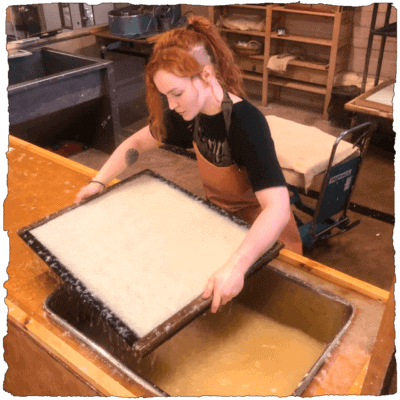
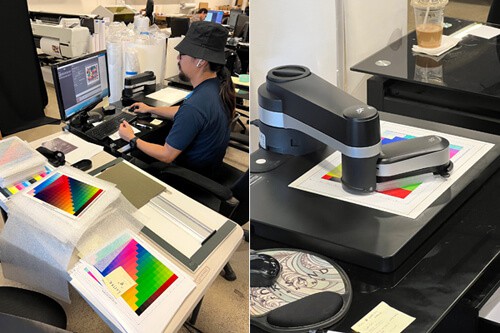
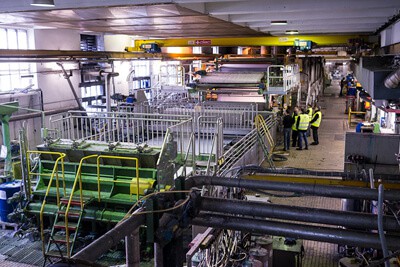
Should I print on watercolor or regular art paper?
This is a very important question! We understand the diverse needs of our artist community, we also offer a selection of economy art papers designed for budget-minded products such as matted prints. These alternatives are carefully produced to deliver quality performance at a more accessible price point, ensuring that artists can price products at varying price tiers to offer alternatives. While these papers may not boast the same heritage cotton composition, they are engineered to offer commendable texture and color vibrancy.
Our photo papers include matte, luster and gloss finishes, and are all fine art, archival grade made using our state-of-the-art pigmented inks for longevity. They provide a practical solution for affordable gift and souvenir art prints. By incorporating these economy options into our selection, we strive to support the artistic journey of every painter, recognizing the importance of affordability without sacrificing the joy and integrity of the fine art process.
What about photography?
Photography prints can indeed be made using watercolor paper, offering a unique fusion of traditional art media aesthetics with modern photographic imagery. This approach is favored by photographers and artists seeking to imbue their prints with a distinctive, tactile quality that sets their work apart. Watercolor paper, with its textured surface and absorbent nature, can add depth and a sense of warmth to photographic prints, enhancing the visual impact and emotional resonance of the image. The texture of the paper can introduce an artistic, handmade feel to the prints, potentially elevating the perceived value and uniqueness of each piece. This method is particularly appealing for fine art photographers, galleries, and collectors who appreciate the interplay of light and texture, and who are looking for something beyond the conventional glossy or matte photo prints.
However, printing photographs on watercolor paper comes with its set of challenges and considerations. The very texture and absorbency that add to the appeal of watercolor paper can also complicate color reproduction and detail clarity. The ink absorption rate may differ from that of standard photo paper, potentially leading to muted colors or a loss of sharpness in the fine details of the image. This necessitates careful calibration and testing to achieve the desired outcome, often requiring specialized printing equipment and knowledge of color management. Additionally, the cost of high-quality watercolor paper is typically higher than that of traditional photo paper. Thus, while the artistic benefits of using watercolor paper for photography prints are clear, they come at the expense of additional effort, expertise, and higher production costs, making it a choice that needs to be weighed carefully against the intended artistic and commercial outcomes.
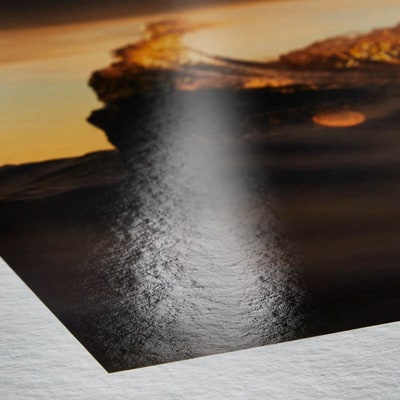
Should I release Editions?
Edition planning is an essential part of the release of new art. You should to decide in advance the edition format to release prints, its a poor marketing practice to change your edition structure after selling some prints and may cause customer concerns.
Open Edition Prints
Offering open edition (OE) prints is a great way to provide a cost-effective option for art lovers, making your work accessible to a broader audience. OE quantity is “unlimited”.
Limited Editions Prints
Create a sense of exclusivity with limited edition runs, driving up demand and value for your work among collectors. There are two popular types of limited edition prints:
- SN (Signed and Numbered) - These are standard giclée prints that are signed and numbered by the artist. Common sizes for Signed & Numbered editions range from 50-250.
- AP (Artist Proofs) - Artist Proofs offer even more exclusivity for collectors. In addition to being signed & numbered by the artist, an AP may also be hand-embellished - making it even more like an original painting. Often, the number of Artist Proofs offered are only 10% of the total edition size. For example, an edition with 100 Signed & Numbered prints may only offer an additional 10 Artist Proofs.
Both SN and AP prints are different from “Uniques”. A “Unique” is a one of a kind giclée print with extra heavy embellishment or highlighting or screening. Usually, each copy is distinctly different - hence the name, “Uniques”. These may also be released in a very limited edition such as a set of 5.
In Hawaii, artists are legally required to provide Certificates of Authenticity with the sale of any limited edition prints. This document ensures the value of the print, and must include certain facts such as the artist name, year, date, and more. For Hawaii artists, the State of Hawaii has a Revised Statute 194 governing certificates.
How Do I Choose an Edition Size?
Higher quantities allow for more sales (if demand exists), while lower quantities may allow an edition to “sell out”, which is a desirable marketing goal to support value and reputation.
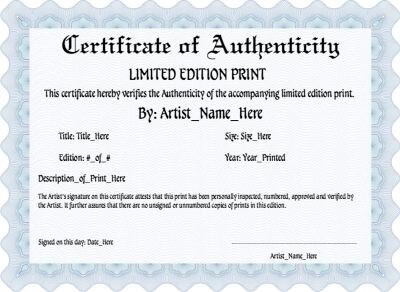
How should I display my watercolor prints?
Displaying a watercolor paper print within a frame offers a myriad of possibilities, each method accentuating different aspects of the artwork and influencing the overall aesthetic and presentation. When a print is trimmed to precise dimensions, it presents a clean and contemporary look, allowing the artwork to fit seamlessly within the frame. This method is particularly effective for modern interiors or galleries where a sleek, minimalistic presentation is desired. The trimmed print can be placed directly against the glass or set back with a mat. Using a mat not only adds a visual buffer between the artwork and its surroundings, enhancing focus on the piece, but also serves to protect the artwork by preventing it from touching the glass, which can be crucial for preserving the integrity of the paper and the print over time.
Deckled edges, where the paper's edges are feathered, offer an artisanal and textured appearance, emphasizing the handmade quality of the watercolor paper. This presentation style can be particularly appealing for artworks that benefit from a more organic, tactile feel. When framed, a deckled print can be float mounted, a technique where the artwork is raised slightly off the back of the frame, casting a soft shadow and creating a sense of depth and dimensionality. This method showcases the unique edges of the paper and can be combined with or without a mat, depending on the desired effect. A mat used with a float-mounted print typically requires spacers to maintain a gap between the artwork and the glass, enhancing the floating effect and adding to the visual interest of the display. Whether choosing a trimmed or deckled finish, with or without a mat, or opting for a float-mounted presentation, each method offers a distinct way to highlight the beauty and texture of watercolor paper prints, allowing artists and collectors to tailor the framing to complement both the artwork and its intended space.
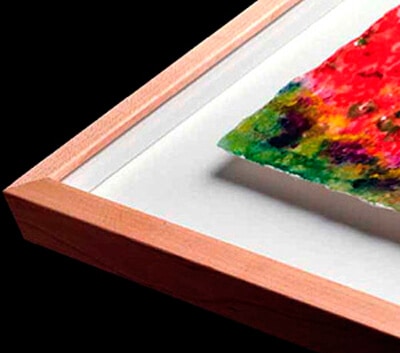
Grow your business with art prints!
Growing a fine art business requires a combination of strategic planning, marketing, networking, and continuous creative development.
- Develop a Strong Online Presence: maintain a professional website showcasing your work, artist statement, biography, and contact information. Utilize social media to share artwork, process videos, and also “behind-the-scenes” content.
- Leverage Online Sales Platforms: Etsy, Saatchi Art, and Artsy provide artists with opportunities to sell their work to a global audience.
- Exhibit in Galleries and Art Shows: Participating in gallery exhibitions, art fairs, and local art shows to significantly increase visibility - sell your work, meet collectors, and network with other professionals.
- Offer Limited Edition Prints: make art more accessible to a broader audience and provide a steady income stream. High-quality prints, especially when signed and numbered, can add a collectible aspect to an artist's work.
- Engage in Networking and Collaboration: relationships with other artists, galleries, and influencers in the art world will open up new opportunities for exhibitions, collaborations, and sales. Networking can be done through social media, art events, and by joining art associations or groups.
- Collect Email Subscribers: Building an email list allows artists to directly communicate with their audience, share updates about new work, exhibitions, and offer exclusive deals.
- Create a Blog or Vlog: Sharing insights about the creative process, techniques, and the stories behind artworks can help artists connect with their audience on a deeper level. Content marketing through blogs or video logs (vlogs) can also improve an artist's search engine visibility and attract new followers.
Learn more!
Want to learn more about fine art watercolor and other prints? Stop by our office to talk, we’re happy to share our knowledge and ideas!
Call us! (808) 545-5511
Our sister brands...
Chromaco is a leading brand of Black Sand Publishing (diversified art business focusing on art licensing and distribution). We also operate 808Arts.com (Hawaii-focused online art marketplace), and Chromaco Ceramics (custom printed ceramic products for construction).
